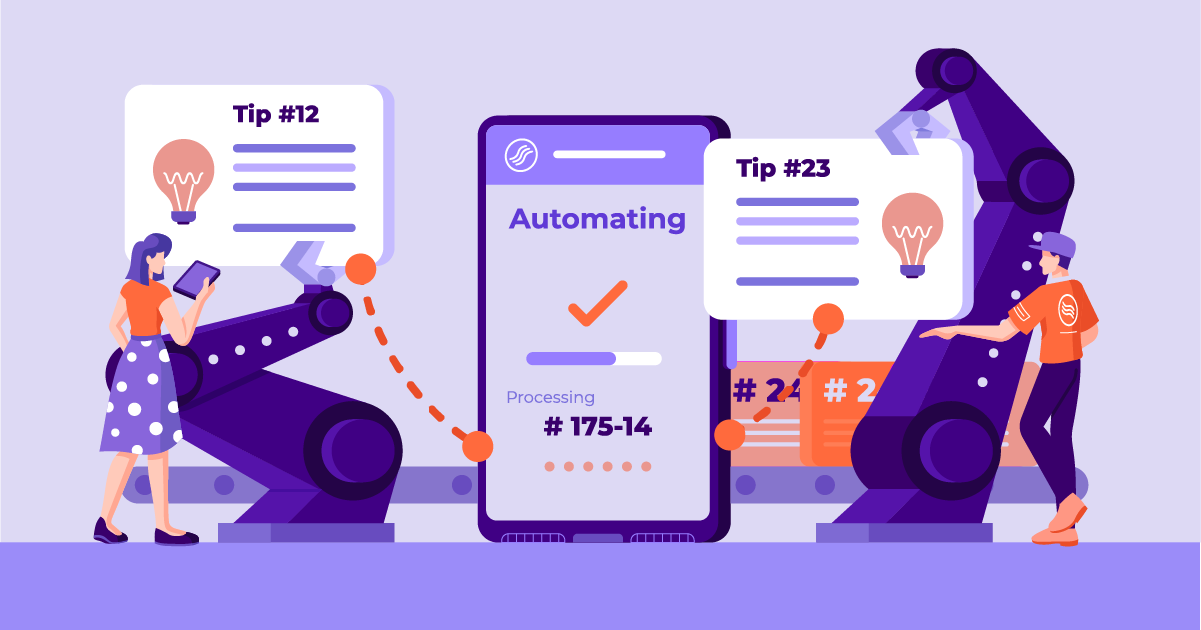Skid Steer Maintenance Guide: Preventive and Scheduling Best Practices

Skid steers are versatile machines that play a crucial role in various industries, from construction to landscaping and agriculture. These compact loaders are known for their ability to tackle a wide range of tasks efficiently.
However, like any equipment, skid steers require regular maintenance to ensure their optimal performance, reliability, and longevity.
In this comprehensive skidsteer maintenance guide, we will explore the importance of skid steer maintenance and provide you with preventive and scheduling best preventive maintenance practices to keep your equipment in top shape.
Understanding the Core Components of a Skid Steer
Skid steers have three essential components that require regular maintenance: the engine, hydraulic system, and tires. The engine is the powerhouse of the skid steer, needing oil changes, filter replacements, and fuel system checks.
The hydraulic system powers the lift arms and attachments, necessitating regular inspections of fluid levels, hoses, connectors, and filter replacements. Tires contribute to stability, traction, and maneuverability, requiring maintenance such as pressure checks, inspections for damage, and regular rotation.
With proper skid steer maintenance tips, these components ensures optimal performance, longevity, and safety of the skid steer.
The Importance of Skid Steer Maintenance
Consistent maintenance is crucial for the efficient operation and lifespan of skid steers. By regularly maintaining key components such as the engine, hydraulic system, and tires, optimal performance is ensured. Regular oil changes, filter replacements, and fuel system checks keep the engine running smoothly, providing reliable power output. A regular maintenance schedule will also help reduced downtime and repair or maintenance costs. This is why a skid steer maintenance checklist is such a valuable tool.
Maintaining the hydraulic system, including fluid levels, hoses, and filters, ensures smooth operation of lift arms and attachments.
Proper tire maintenance, such as pressure checks and rotation, enhances stability, traction, and maneuverability. By investing in consistent maintenance, skid steer owners can maximize efficiency, extend the machine’s lifespan, and minimize the risk of breakdowns, ultimately saving time and money in the long run.
Essential Daily Checks for Skid Steers
Performing routine maintenance tasks are essential to prevent breakdowns and enhance the performance of skid steers. Here’s a list of tasks to consider:
- Check engine oil and coolant levels, ensuring they are at the recommended levels.
- Inspect tires for proper inflation, looking out for any signs of damage or wear.
- Clean debris from the radiator and engine compartment to prevent overheating.
- Inspect hydraulic fluid levels and check for any leaks or abnormalities.
- Grease all applicable grease points to ensure smooth operation of moving parts.
- Test all lights and signals to ensure they are functioning correctly.
- Inspect filters (air, fuel, and hydraulic) and replace them if necessary.
- Check the battery’s condition and clean any corrosion buildup.
- Inspect safety features like seat belts and emergency shut-off switches.
- Keep a general visual inspection for loose or damaged components and address them promptly.
By incorporating these daily maintenance tasks into your routine, you can minimize the risk of breakdowns, optimize performance, and promote the longevity of your skid steer.
Creating a Maintenance Schedule for Skid Steers
Developing and following a maintenance schedule is crucial for extending the operational life of equipment, including skid steers.
Start by consulting the manufacturer’s recommendations and guidelines. Consider factors such as hours of usage, workload, and environmental conditions. Create a schedule that includes regular tasks like fluid changes, filter replacements, inspections, and lubrication.
By following this schedule consistently, you can address minor issues before they become major problems, optimize performance, and prevent unexpected breakdowns.
Regular maintenance reduces wear and tear, minimizes the risk of costly repairs, and extends the operational life of the equipment, ensuring maximum productivity and return on investment.
Preventive Maintenance for Skid Steers
Preventive maintenance in the field service industry is a proactive approach that involves regularly scheduled inspections, servicing, and repairs to prevent equipment failures and downtime. Implementing a preventive maintenance program for skid steers offers numerous benefits. It reduces the risk of unexpected breakdowns, improves equipment reliability and performance, extends the lifespan of the machine, and minimizes repair costs.
To establish a preventive maintenance program, start by creating a maintenance checklist tailored to your skid steer’s specific requirements. Set up a regular schedule for inspections, fluid changes, filter replacements, and other maintenance tasks.
Keep detailed records of schedule routine maintenance and follow manufacturer recommendations.
Additionally, train operators on daily maintenance tasks and encourage reporting of any abnormalities. Regularly review and update the program to ensure its effectiveness.
Cleaning and Lubrication: Crucial Steps in Skid Steer Maintenance
Cleaning and lubrication play vital roles in maintaining a skid steer’s efficiency. Regular cleaning removes dirt, debris, and grime, preventing clogs and damage to sensitive components. It also helps to prevent overheating by keeping air intakes and radiators clear.
Lubrication reduces friction between moving parts, preventing excessive wear and ensuring smooth operation. When cleaning, use appropriate cleaning agents, brushes, and compressed air to reach inaccessible areas.
Pay attention to radiator fins, air filters, and engine compartments. When lubricating, use recommended lubricants and follow manufacturer guidelines for applying grease to key points.
Regular cleaning and lubrication not only enhance efficiency but also contribute to the overall longevity and reliability of the skid steer.
Tackling Common Skid Steer Maintenance Issues
Skid steers can encounter common issues that may affect their performance. Some of these issues include engine starting problems, hydraulic system malfunctions, electrical issues, and tire punctures. Troubleshooting tips can help address certain problems.
For example, checking fuel levels, battery connections, and ignition switches for engine starting issues. Inspecting hydraulic hoses and connections for leaks or blockages can resolve hydraulic system problems. Electrical issues may require checking fuses, switches, and wiring connections. However, it is important to know when to seek professional help.
If the issue persists, if there is a safety concern, or if the problem requires specialized knowledge or equipment, it is advisable to contact a professional technician to diagnose and repair the skid steer properly.
Importance of Maintenance Records for Skid Steers
Keeping comprehensive maintenance records for skid steers is highly significant. These records serve as a valuable resource for tracking the maintenance history, identifying patterns, and ensuring proper maintenance practices. They provide clear documentation of performed tasks, repairs, and replacements, which aids in scheduling future maintenance and adhering to warranty requirements. Maintenance records also contribute to the resale value of the skid steer by demonstrating its well-maintained condition. Additionally, in the event of any legal or insurance-related matters, having comprehensive maintenance records can provide evidence of regular maintenance and responsible ownership. Overall, maintaining detailed records helps maximize efficiency, minimize downtime, and ensure the longevity of the skid steer.
Safety Measures in Skid Steer Maintenance
Safety is paramount during skid steer maintenance activities. Prioritizing safety creates a culture that fosters better maintenance results and lowers accident rates. By following proper safety protocols, such as wearing personal protective equipment, securing the machine, and isolating energy sources, maintenance personnel can reduce the risk of injuries, equipment damage, and accidents.
A safety-first culture promotes heightened awareness, adherence to guidelines, and proactive hazard identification, leading to more effective maintenance practices, improved efficiency, and a safer working environment for all involved.
Leveraging FieldInsight for Skid Steer Maintenance
FieldInsight offers valuable features for managing skid steer maintenance. It provides centralized task management, automated reminders, and tracking of maintenance history. FieldInsight’s documentation and reporting capabilities enhance record-keeping and provide insights into maintenance performance. With mobile accessibility, technicians can access and update information on the go. Using FieldInsight improves efficiency, reduces downtime, extends equipment lifespan, and enhances overall operational productivity.
Conclusion
Regular maintenance of components like engine oil checks, hydraulic system, and tires ensures optimal performance and extends the lifespan of skid steer loaders. We highlighted the significance of developing a maintenance schedule, implementing preventive maintenance programs, and keeping comprehensive maintenance records.
Furthermore, we mentioned the role of cleaning and lubrication in maintaining efficiency and provided troubleshooting tips. Lastly, we emphasized the benefits of using FieldInsight as a comprehensive solution for scheduling, tracking, and managing skid steer maintenance tasks.
For more tips for skid maintenance or to optimize skid steer performance and longevity, consider preventive maintenance and explore FieldInsight for effective maintenance management.
What You Should Do Now
- Book a Demo. You’ll be in touch with an automation expert who has worked in this space for over 5 years, and knows the optimal workflow to address your needs.
- If you’d like access to free articles about managing HVAC workflows, go to our blog.
- If you know someone who’d enjoy reading this page, share it with them via email, Linkedin, Twitter, or Facebook.








